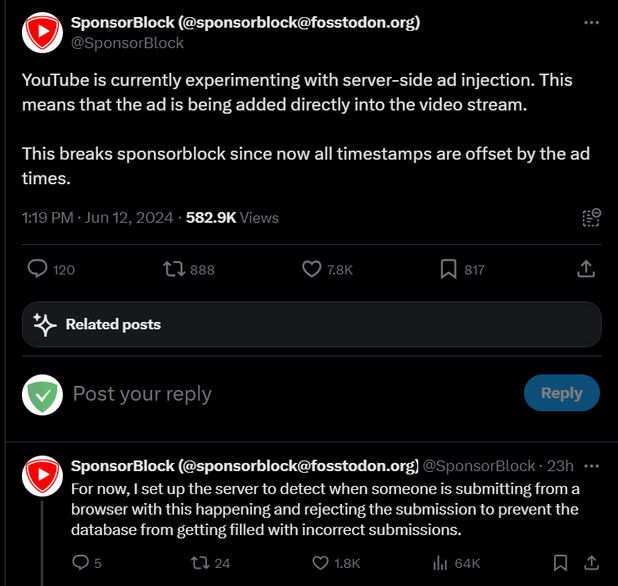YouTube has recently deployed a novel strategy to counter ad blockers: server-side ad injection. This method integrates advertisements directly into the video content stream, making it significantly harder for ad blockers to detect and remove them. While this presents a considerable hurdle, the ad-blocking community is actively exploring solutions to overcome this new tactic and remains optimistic about future countermeasures.
The Evolution of YouTube’s Anti-Ad Block Measures
For about a year, YouTube has been intensifying its efforts against ad blockers. Initially, this involved pop-up messages informing users that “ad blockers are not allowed on YouTube.” Subsequently, the platform, owned by Google, experimented with a three-strikes policy, warning viewers that video playback would be interrupted after three videos unless they disabled their extensions. Some warnings even included a countdown timer, sometimes lasting up to 60 seconds, urging users to “allow YouTube ads” or “try YouTube Premium” before the message reappeared.
Escalation: Server-Side Ad Injection Arrives
Despite these measures, ad blockers have largely adapted and continued to function effectively. This ongoing battle between ad blockers and YouTube has been a continuous cycle of adaptation and counter-adaptation, with neither side achieving a decisive victory.
Now, YouTube appears to be raising the stakes significantly by introducing what they hope will be a game-changing tactic: server-side ad injection. As reported by 9to5Google, this new method has been observed in action. Developers of ad-blocking extensions are already reacting to this development.
For example, the developer of SponsorBlock, a community-driven ad-blocking extension, announced that the extension is currently ineffective for users experiencing this server-side ad injection experiment, which seems to be a limited test for now.
 SponsorBlock extension developer announcement regarding server-side ad injection
SponsorBlock extension developer announcement regarding server-side ad injection
The AdGuard team has also confirmed the implementation of this new ad insertion method. But how does server-side ad injection work, and how does it differ from YouTube’s previous ad delivery techniques?
Understanding Server-Side Ad Injection
Server-side ad injection represents a significant shift in how YouTube delivers ads compared to traditional methods. Previously, ads were served separately from the main video content. This separation allowed ad blockers to identify and block these ads before they reached the user. However, with server-side ad injection, the advertisement is integrated directly into the video stream on YouTube’s servers. This integration makes the ad indistinguishable from the actual video content itself. Consequently, ad blockers become significantly less effective because they lose the ability to differentiate between ads and the intended video.
While server-side ad injection is a relatively new approach for YouTube on web platforms, a similar technique has been utilized within their mobile applications for some time. Technically, YouTube has been employing the UMP protocol to bundle video metadata, ad metadata, and the videos themselves within requests to *.googlevideo.com. This domain, managed by Google, is responsible for hosting and delivering various video content across Google’s services, including YouTube.
The parallel between the UMP protocol and YouTube’s latest server-side ad injection strategy lies in their data handling and delivery methods. Just as server-side ad injection seamlessly incorporates ads into the video stream, UMP efficiently packages video and ad-related data together for streamlined delivery.
Implications for Ad Blockers
Essentially, Youtube Server Side Ad Injection presents a greater challenge for ad blockers. It severely diminishes their capacity to filter out ads from the data transmitted by YouTube when a user requests a video. Ad-blocking browser extensions are particularly vulnerable to these tactics compared to standalone desktop ad-blocking applications, primarily because extensions have more limited resources to combat this method.
Currently, there is no definitive, foolproof solution to completely bypass server-side ad injection. However, this does not imply that a solution will not emerge in the future. Filter developers are already actively working on immediate, short-term fixes and are diligently searching for more robust and long-term solutions to this evolving challenge.
